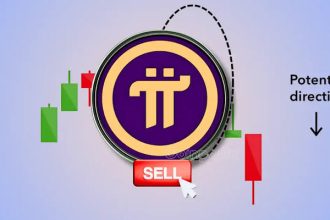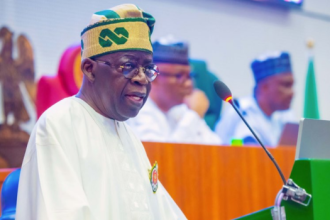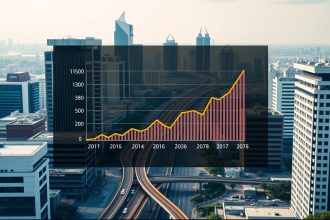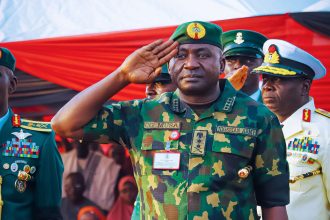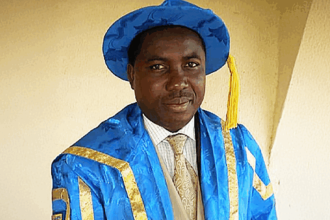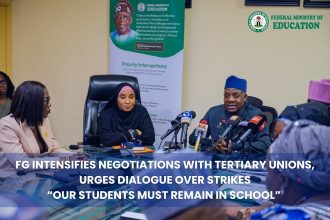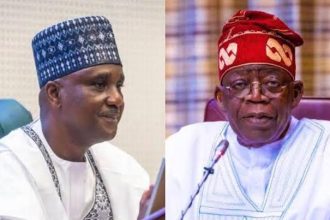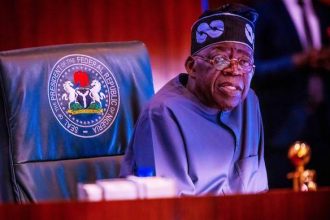The Federal Capital Territory (FCT) and 23 states in the country have received N24,450,000,000 from the Conditional Grant Schemes as incentives to invest more of their resources into areas of national development priorities and the Millennium Development Goals (MDGs)/Sustainable Development Goals (SDGs).
This was disclosed yesterday at the State House, Abuja, by the Senior Special Assistant to the President on SDGs, Mrs. Adejoke Orelope-Adefulire, at a news briefing organised by the Presidential Communications Team.
She stated that the fund disbursed since 2015 till date, was introduced in 2007 with a 50 percent marching grant from the federal government and 50 percent from the participating states.
According to her, the grants were targeted at education, health, water and sanitation projects “and aimed at executing pro-poor projects in a consultative manner with the beneficiaries.”
The SSA also said the fund was spent on the implementation of 732 water and sanitation facilities; 494 health facilities (new facilities and renovation/rehabilitation); 616 education facilities (new construction, renovation/rehabilitation of block of classrooms; 1,150 women and men were empowered/trained in vocational skills, such as sewing, knitting, detergent & pomade making etc.)
She said there were special intervention projects across the geo-political zones, an initiative she affirmed was aimed at strategic investment to fast-track the achievement of the SDGs in Nigeria.
“Between 2016 and 2021, a record number of projects have been implemented, aimed at providing essential services to accelerate the achievement of the SDGs, by ensuring no Nigerian is left behind.
“In the education sector, 8,008 classrooms constructed and 305 renovated with furnishing to strengthen basic education across the country.
“A total of 4,845 Desktop and Laptop Computers have also been supplied to schools across the country for Information and Communication Technology (ICT) training.
“In the health sector, 195 Health Centres, comprising Primary Healthcare Centres (PHC) and Mother and Child Centres (MCC) were constructed, complemented with the supply of 199 Intensive Care and Rural ambulances. About 257 incubators and 7,464 regular and automated hospital beds were supplied across tour health facilities.
“In other cross-cutting sectors, OSSAP-SDGs constructed 66 Vocational and Skills Acquisition Centres; supplied 1,294 transformers; provision of 19,266 solar-powered streetlights; 300 Housing units for internally displaced persons (IDP) in Borno State; and 925 Solar Boreholes, in addition to several other interventions.”
“On SDG-4, a key challenge confronting the country has to do with Out-of- School-Children, a demographic challenge that relates to an interplay between employment (SDG-8), education (SDG-4), poverty (SDG-1) and the digital economy (SDG-17).
“With a population of approximately 200 million people, regional disparities are significant.”
“On SDG-8, Nigeria’s informal economy is one of the largest on the continent – estimated at 53 per cent of the Labour force and accounting for 65 per cent of GDP. It is estimated that 75 per cent of all new jobs are informal.
Ensuring youth are well-trained and able to transition to productive employment through the digital economy can help reduce poverty and help diversify growth away from oil and gas.
“With about 10.8 million out of school children and more people drifting into poverty, Nigeria’s expenditure on education just about 8.6 percent in 2015 and witnessed a steady decline to 8.2, 8.5 and 8.2 percent in 2016, 2017 and 2018.
“This was largely due the 2016 economic recession and the decline in global oil prices and COVID-19 pandemic,” she added.
On Goal 2 of Zero Hunger, the SSA said:
“Findings from the baseline showed that the prevalence of undernourishment in 2016 for stunting, moderate stunting and severe stunting were 32.9 percent, 20.4 percent and 12.5 percent respectively, while in 2019 the report indicated 32 percent stunting, and 21.2 and 10.8 percent for moderate and severe stunting respectively. Thus, we had modest decrease in severe stunting.”
For Goal 4, she affirmed that participation rate of youth and adults in formal and non-formal education and training in the previous 12 months increased from 4.97 percent in 2016 to 5.38 in both 2017 and 2018 while for Goal 8, Nigeria faced economic challenges, which was a fall out of global oil price crash and insufficient foreign exchange earnings to achieve Balance of trade.
Notwithstanding, she said, this was increased from -1.6 per cent in 2016 to 0.82 percent in 2017, with and annual per capita at -17.31 percent and was subsequently increased to 1.91 percent in 2018 and 2.27 percent in 2019 with its per capita GDP growth of 1.22 percent in 2019.


